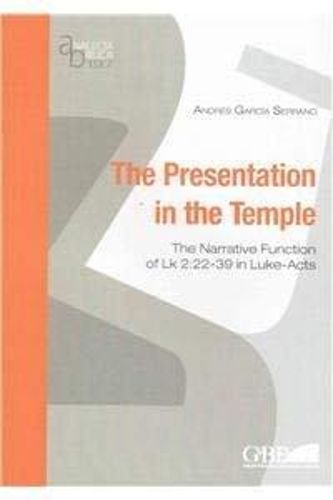Readings Newsletter
Become a Readings Member to make your shopping experience even easier.
Sign in or sign up for free!
You’re not far away from qualifying for FREE standard shipping within Australia
You’ve qualified for FREE standard shipping within Australia
The cart is loading…






This doctoral dissertation shows that Lk 2:22-39 reveals the identity and mission of Jesus. The presentation passage picks up many of the main features of Jesus contained in the previous episodes in the Lukan infancy narrative, and adds important features not present in the other pericopes: the Temple as a privileged place of revelation, the universal offer of salvation in Jesus, and the divided response in Israel. These distinctive features of the passage are subsequently developed throughout the progression of Luke- Acts. The significance of the passage increases as it is related to additional parts of the Lukan composition. Simeon’s characterization of Jesus, particularly in his commission statement with its universal salvation and divided response, is fulfilled not only in Jesus, but, surprisingly, also in his disciples. This is verified in the common architecture seen in the narrator’s characterization of the protagonists throughout the entire macro-narrative. The passage proves the narrative coherence of Luke- Acts and the unity between Jesus and his disciples. It has both christological and ecclesiological implications: the universal offer of salvation implies a rejection; it affects not only Jesus, but also his followers, the reader included, who is invited to configure himself or herself with Jesus’ disciples in Luke-Acts and, through them, with Jesus Christ.
$9.00 standard shipping within Australia
FREE standard shipping within Australia for orders over $100.00
Express & International shipping calculated at checkout
This doctoral dissertation shows that Lk 2:22-39 reveals the identity and mission of Jesus. The presentation passage picks up many of the main features of Jesus contained in the previous episodes in the Lukan infancy narrative, and adds important features not present in the other pericopes: the Temple as a privileged place of revelation, the universal offer of salvation in Jesus, and the divided response in Israel. These distinctive features of the passage are subsequently developed throughout the progression of Luke- Acts. The significance of the passage increases as it is related to additional parts of the Lukan composition. Simeon’s characterization of Jesus, particularly in his commission statement with its universal salvation and divided response, is fulfilled not only in Jesus, but, surprisingly, also in his disciples. This is verified in the common architecture seen in the narrator’s characterization of the protagonists throughout the entire macro-narrative. The passage proves the narrative coherence of Luke- Acts and the unity between Jesus and his disciples. It has both christological and ecclesiological implications: the universal offer of salvation implies a rejection; it affects not only Jesus, but also his followers, the reader included, who is invited to configure himself or herself with Jesus’ disciples in Luke-Acts and, through them, with Jesus Christ.